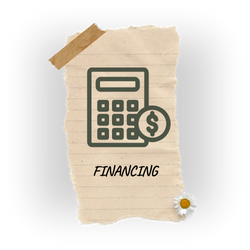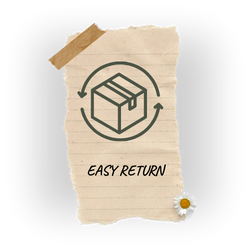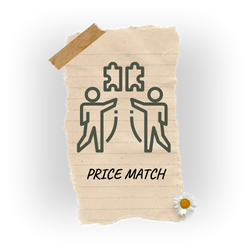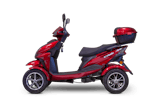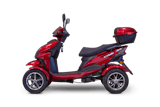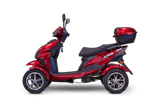SleepSafe Beds Insurance/Medicaid information

Obtaining Insurance Coverage for a SleepSafe® Bed
As Durable Medical Equipment, most SleepSafe® Beds are covered by Medicaid and private insurance
We do not sell directly to insurance companies. For Insurance coverage, customers work with their Durable Medical Equipment (DME) provider, who are qualified to recommend the proper SleepSafe® Bed for a specific medical need.
This information is from experience working daily with our customer’s DME providers and caregivers. Keep in mind that these are general guidelines and that each state sets and regulates its own guidelines.
Two basic requirements are typically necessary:
1. A Letter of Medical Necessity.
2. A prescription from a doctor specifying the exact bed model and features outlined in the letter.
About Letters of Medical Necessity:
In a Letter of Medical Necessity, it must be clear that a SleepSafe® Bed addresses SPECIAL NEEDS and is the ONLY bed to address the SPECIFIC MEDICAL NEEDS of the person (patient) who will be using the bed. You must point out why their needs are not being met by their current bed. Once these failings or dangers are detailed, a SleepSafe® Bed can then be prescribed as a solution to their medical needs.
Below is a 5-step outline to help with the construction of a solid letter.
A Basic Outline for a Letter of Medical Necessity
1. Introduce the patient and how long they have been in the care of the doctor or facility. Describe their condition and detail the special needs that are a consequence of the condition, these are commonly physical and/or cognitive disabilities:
For Example:
• Lack of body or mental control;
• Frequent seizures;
• No recognition of the danger from rolling or falling out of bed;
• Entanglement with the side rails if a "hospital" bed is currently in use and the potential or
documented injury as a result;
• Potential for entrapment with the possibility of suffocation due to the gaps around the
mattress—especially the corners.
2. Explain how the current bed or crib fails to protect the patient from falls that can result in an injury. Include, if applicable, how the patient has the capacity to climb up dressers or chairs around their environment, furthering the chance of injury.
3. Address the necessity for the patient to be seen for medical observation and the patient to see their caretaker within an environment that is medically safe and secure. It is recommended that you mention the psychological benefits as well.
4. Recommend the SleepSafe® Bed model that addresses each of these concerns—with specific requirements such as full safety rails, or specific safety rail height required for medical necessity and safety.
For Example:
• For extremely active patient disorders, the double safety rail and mattress height adjustability of the SleepSafer® Bed model could best accommodate that need;
• The necessity to raise the head or knees of the patient (articulation) to feed, medicate, or provide patient mobility with the bed for therapy.
5. Remember that this process is about defining how a SleepSafe® Bed fits the specific medical need of the patient. Be careful to avoid any benefit to the caretaker, as it could cause your request for insurance coverage to be denied.
6. Be sure that the letter AND the prescription prescribe the EXACT same SleepSafe Bed model. If the Letter of Medical Necessity is requesting a SleepSafe II (Medium Bed) with a Hi-Low foundation, the doctor should request the same model.
Our website has a link to Lmnbuilder.com, a useful tool for creating Letters of Medical Necessity.
If Medicaid has denied your claim
If your request for a SleepSafe® Bed has been denied, you may have the right to appeal, but you must act quickly and follow every rule associated with the denial. Read the letter or correspondence very carefully to make sure you don’t miss a deadline. There is usually a short time line to complete all steps in requesting an appeal, often only 15 to 30 days.
Find help in your state
Every state has Legal Services to help those who may need help but cannot afford legal representation. Follow this link http://www.ncsc.org/topics/legal-services/legal-aid-pro-bono/state-links.aspx for Legal Services contacts in your state. There is no guarantee that they will accept your case, however if they do, there should be no charge to you.
Help them to help you!
To increase the chance of an agency accepting your case, be prepared BEFORE you call them. Your DME Provider may help you when contacting an advocate. If you seek the help of your DME Provider, you will need to sign a HIPPA release, so they can talk to others on your behalf. Do your best to provide the advocate a complete packet of information that should include the following information:
1. Patient (Client) Information. This is the person who has been denied.
2. Manufacturer representative information (SleepSafe® Beds)
3. The notice of determination (Letter or other communication stating claim has been denied)
4. Letters of Medical Necessity (Any letters that were submitted with the claim)
5. Cost analysis information (LCEEA) (Provide information that you have considered and exhausted ALL alternatives and why a SleepSafe® Bed is the least costly alternative to fit your specific need)
6. Product information Be sure to provide the exact bed you need. There are different safety rail heights for the SleepSafe® (Low Bed), SleepSafe® II (Medium Bed) and the SleepSafer® (Tall Bed). There are also differences for the bed foundations to consider:
- Fixed foundation
- Articulating Foundation
- Hi-Lo Foundation (Articulation plus Hi-Lo operation)
- Foundations can be operated manually, electrically or a combination of both.
We recommend that you provide a web link from www.sleepsafebed.com to the bed model you chose and a SleepSafe® Bed brochure. At http://sleepsafebed.com/products/photo-gallery/ you can find more information about the beds including specifications comparing bed models.
The advocate may be unfamiliar with a SleepSafe® Bed. It is VERY IMPORTANT for all of those involved to know about the bed you need.
This may include information on ‘specialty beds for those with special needs’, which is different than a traditional hospital bed. SleepSafe® Beds fit a very specific need:
- Helps prevent becoming entrapped or entangled within the bed
- Helps prevent injury within a bed, particularly when the bed is padded
- Helps prevent rolling, falling or climbing out of bed
- Provides a safe sleeping environment.
This information may include any studies conducted on safety issues that may be associated with a traditional hospital bed, or specialty bed or why some individuals may need a specialty bed. An example is the Hospital Bed System Dimensional and Assessment Guidance to Reduce Entrapment published by the FDA. This explains the risk of entrapment in certain types of beds.
Remember: There is no guarantee that an advocate will take your case!
Your legal advocate may review the information and investigate your case to discuss your legal options. Be prepared! Providing as much information upfront can help the advocate decide to take the case. It will be helpful to them to have the information in place that will be needed in an appeal, reducing the amount of their work. This could help them say YES!


